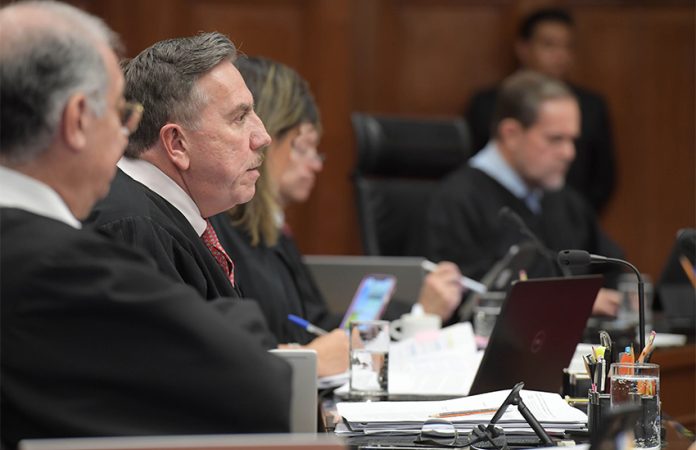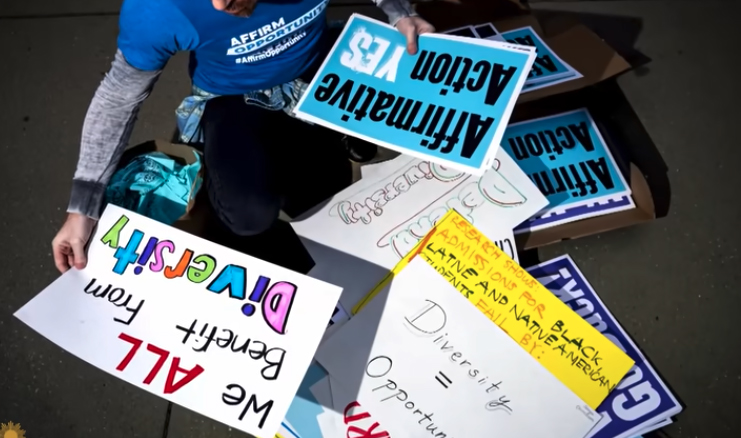by Joe Hong, CalMatters
Teacher turnover is high at schools with large numbers of students living in poverty. Now California is pouring billions of dollars into two programs: One subsidizes college students in credentialing programs and the other offers money to districts that want to create community schools
Teachers don’t get into their profession for money or power, but a little more of both might help keep them at high-poverty schools, where students are more likely to fall behind grade level and less likely to graduate from high school or attend college.
Across California and the nation, many of these schools struggle to retain teachers, leaving them with fewer experienced educators. Those who stay often battle the headwinds of poverty: hunger, homelessness and mental health challenges. After only a few years, many end up leaving for easier teaching jobs in more affluent communities.
California’s elected officials have tried for decades to slow the exodus of veteran teachers from schools with the poorest students. One idea that has been conspicuously absent from the conversation: paying teachers more to work at those schools. The politically powerful California Teachers Association opposes “differentiated pay” policies that would increase salaries for teachers at hard-to-staff schools, rendering that approach a non-starter.
Now, lawmakers are making unprecedented investments in two ideas that have been around for years. One offers prospective educators a grant if they commit to teaching at a high-poverty school after their training. The other, a model known as community schools, rethinks school governance, giving more power to teachers to shape every aspect of a school.
Since 2019, the state has spent close to $5 billion on these two approaches. Despite the boost in spending, it remains unclear whether the state will see a return. Teacher turnover remains a perennial challenge at schools serving more low-income families. As experienced teachers leave in search of less challenging classrooms, students at high-needs schools are less likely to have educators who can help close achievement gaps — seen in the persistently lower test scores among those students compared to their more affluent peers. The stakes are now higher than ever as educators work to help students recover from the academic losses they suffered during the pandemic and remote learning.
Staffing is usually overseen by local school districts. But amid the ongoing teacher shortage, State Superintendent of Public Instruction Tony Thurmond said the California Department of Education has “repurposed” one existing employee to help school districts hire teachers.
When he first ran for state superintendent in 2018, Thurmond said he opposed extra pay for teachers in poorer neighborhoods, disputing evidence that it would help. But in a recent interview with CalMatters, he said he would consider any evidence-based policy, especially since some districts already pay some, such as bilingual teachers, more.
“I support any idea that will support teacher retention,” Thurmond said. “We know the profession is impacted by fatigue.”
A CalMatters analysis of teacher experience data from 35 districts — adding up to 1,280 schools — across the state found that the correlation between student poverty and teacher experience is stark, especially in urban regions.
Four years for $20,000
The Golden State Teacher Grant Program gives up to $20,000 in grants to college students earning a teaching credential. In exchange, they work in a high-poverty school for four years within eight years of obtaining their credential. The state committed $500 million over five years to funding the grants, starting in 2021. Gov. Gavin Newsom proposed injecting an additional $6 million into the program this year.
Samantha Fernandez, a 23-year-old single mother from Chula Vista, received $16,000 through the grant program. She said the money covered the entire cost of earning her credential.
“It was a blessing,” she said.
While earning that credential, she worked in two schools in the Cajon Valley Union School District in eastern San Diego County. One had more poorer students while the other was made up predominantly of wealthier ones. The former, Chase Avenue Elementary, serves a large community of immigrants and refugees from Afghanistan, many of whom only spoke Pashto when they arrived. The language barrier was a challenge, but she found the experience to be just as rewarding as working in a more affluent school.
“I want to help kids achieve their dreams, no matter what struggles they go through,” Fernandez said. “I want to be the person who can be their support outside their home.”
Fernandez never set out to work in a high-poverty school, but she said “everything happens for a reason.” It’s too early to know if she’ll stay beyond her four-year commitment, but she said she’s open to it.
In the fall, she’ll start a master’s program in teaching. She said the grant will allow her to continue her education “with a sense of relief.”
This isn’t the first time that California has tried enticing teachers into working at a high-needs school by subsidizing their education. In 2000, the state launched the Governor’s Teaching Fellowship, which gave prospective teachers up to $20,000 in grants for committing to work in a school where test scores rank in the bottom half of the state’s public schools.
The program was short-lived. It ran out of money in 2003. A 2009 study found that about 75 percent of teachers in the program stayed at high-poverty schools beyond their three-year commitments.
As a reincarnation, the Golden State Teacher Grant Program is attracting applicants in droves. So far, almost 11,000 prospective teachers have committed to teaching at a high-poverty school. The state handed out more than $132 million in grants in the past two years.
None of the teachers have yet completed their four-year commitments, but the state plans to track how many stay beyond that time.
Some research suggests the Golden State Teacher Grant Program could lead to less turnover in the long run. The Learning Policy Institute, an education research group, found that reducing the cost of teacher training can increase recruitment and retention. Tara Kini, the chief of policy and program at the Learning Policy Institute, said the program will help relieve a financial burden on teachers amid the academic fallout from the pandemic.
“The past couple of years have been pretty challenging,” Kini said. “It points to a need for greater incentives for teachers.”
The California Student Aid Commission, the state agency that oversees the Golden State Teacher Grant Program, expects to give out over $157 million by the end of this school year. That puts the state on track to use up the entire $500 million before the 2025 deadline.
Kini said she expects the program to have an added benefit of encouraging more teachers of color — who are already more likely to work in high-poverty schools and carry more student debt — to enter the workforce.
While experience is just one factor, research shows that students do better with teachers who have at least five years of experience. This is where a second statewide initiative, community schools, might help get teachers to stay.
Giving teachers power
Community schools partner with local health or social service organizations to become a one-stop shop for students and their families. Schools tailor the partnerships to what their families need.
The community schools model has been around for decades, but in the past three years, Gov. Newsom and the Legislature poured an unprecedented $4.1 billion into the program.
The state’s investment might not end up in teachers’ pockets, but the money could give teachers at those schools more of a voice at their campuses. Both teachers and experts say that giving educators the power to design lessons and decide how to use a school’s money to help students could be as effective as pay raises to get teachers to stay in challenging work environments.
The community schools model requires:
- Shared governance — Teachers, parents, students and administrators all have a say in every aspect of a school’s operation, from curriculum to after-school activities;
- Autonomy — School communities can make decisions on their own without interference from district bureaucracies;
- “Integrated student supports” — Schools can partner with local organizations to provide health or social services based on the unique needs of their students;
- A community school coordinator — One full-time employee handles administration.
For some educators, the model is an obvious solution to teacher turnover at high-poverty schools.
“A lot of teachers feel disempowered and not part of democratic decision-making,” said David Goldberg, vice president of the California Teachers Association. “They feel like their needs are not being met at schools.”
Giving educators more authority at their workplace makes them feel like respected professionals, said Richard Ingersoll, a professor at the University of Pennsylvania who has studied community schools for decades.
“We’re not making automobiles here. You can’t have one-size-fits-all,” he said. “Those closest to the kids need to be given a lot of discretion.”
Kyle Weinberg, president of the teachers union at San Diego Unified, said making sure teachers have a say in how schools serve the most vulnerable students will help keep them on the payroll.
“We know that when we increase educator voices in school decisions, that educators are more committed,” he said. “They’re more committed to working on strengthening what we’re doing as a school, and they’re more likely to stay at that school when they know they have that voice.”
While districts have a lot of autonomy in designing community schools, implementation can be bumpy.
At Sacramento City Unified, the teachers’ union claims that the district has shut them out of the community schools process. According to teachers union President David Fisher, the district applied for the state grant and received some money, but teachers had no say in which schools were selected.
At Twin Rivers Unified, north of Sacramento, teachers union President Rebecca LeDoux said the district is excluding teachers from decision-making, undermining the key tenet of the community schools model. She said the district chose which schools to turn into community schools without any teacher input.
“My problem isn’t with which schools were chosen, my problem is with how it was chosen,” LeDoux said. “It can’t be through the vision of administrators who sit in the ivory tower, farthest from our students.”
Thurmond said he wasn’t aware of these issues at local districts and said his team would investigate further. Steve Zimmer, a deputy superintendent overseeing community schools grants for the department, said the agency would first try to resolve these issues and only resort to taking away money if there’s a clear unwillingness from administrators to get input from teachers.
“I’m not looking to go to this place… but of course we could take adverse action,” Zimmer said. “I feel confident we’re prepared to make course corrections as necessary.”
There are also success stories. At San Diego Unified, the teachers union and district leaders are clearing the same hurdles materializing at other districts. In April, they signed a contract that codifies the principles of community schools into the bargaining agreements at the 15 schools that received state grants.
At the Anaheim Union High School District in Orange County, the community schools model has been implemented at 13 schools. At one school, Sycamore Junior High, which serves a large immigrant population, the district used community schools funding to connect parents to immigration legal services and created a social science curriculum focused on immigration policy in the United States. The school also uses community schools grants to host a farmers market once a month on campus.
Throughout the year, teachers assigned “soapbox speeches,” asking students to give a presentation on any social issue affecting students at the school. Topics ranged from immigration and mental health to pet adoption and food waste.
Nicholas Cordova, a seventh grade history teacher at Sycamore and an Anaheim native, said it’s rewarding to see schools tackling the issues facing students. During the last week of school in May, some of his students presented their speeches. Students stood at their desks as Cordova flipped through their slideshows. His students are soft-spoken and clearly not comfortable with public speaking. Awkward silences punctuated their presentations, but for Cordova, they’re opportunities to encourage his students.
“This is as close to home as we can get,” Cordova said as one student started her speech about mental health.
He said Sycamore has a reputation as an under-performing school, but becoming a community school allows teachers to counter that.
“That’s something we’re always fighting against,” Cordova said. “If people actually took the time to come and talk to the teachers and students, they would see what we’re doing to make the school a better place.”
The community schools model also gives students a voice. Yvonne Walker, a Black seventh grade student at Sycamore, asked staff members to convene a restorative justice session with the eighth grade student council to discuss the rampant use of racial slurs on campus. The session was held on the last Monday of the school year in a portable classroom at the edge of campus.
Restorative justice is an approach to student discipline and campus culture that emphasizes open communication over punishment. A school that embraces restorative justice might have a staff member oversee a discussion with students who just got into a fight instead of suspending or expelling them. A restorative justice approach in Yvonne’s case meant students sat in a circle and shared their experiences with racial slurs.
Yvonne is one of the few Black students at Sycamore, where 93 percent of students are Latino. As the discussion started, it was clear that some of the eighth-graders were unsympathetic. Several were having hushed side conversations. When Yvonne shared how hurtful it is to hear the n-word around campus, the eighth-graders got defensive. “What do you want us to do?” one quietly mouthed. Others talked about how Latino students use slurs with each other as terms of endearment.
At the end of the session, Yvonne, who also identifies as Latino because her mother is from El Salvador, said she was “disappointed by her community.” She said she was hoping at least one of the eighth-graders could empathize.
“I was thinking that there’s probably someone out there who has the same feelings as me,” she said. “I didn’t want to be a part of the silence.”
But staff members did hear her. Brenda Chavez, director of restorative justice at Sycamore, also sits on the community schools steering team.
The steering team represents the shared-governance component of the community schools model. It’s made up of teachers, parents, staff members and the principal of Sycamore Junior High. They meet once a month.
During their final meeting of the school year just hours after the restorative justice session, Chavez mentioned the discussion led by Yvonne. She says that next fall, the steering team will discuss ways to better teach about the history of racism to reduce the use of racial slurs on campus.
The steering team meeting blends the professionalism and formality of a school board meeting with the warmth of a family gathering. The meeting starts when two student members walk into the room with three boxes of pizza.
The teachers, students and parents on the team spend most of the meeting analyzing survey results. The survey asked teachers, students and parents about the school’s strengths and challenges. More than 1,000 responded. Teachers called for more staff and smaller class sizes. Parents wanted more security on campus. Students said they just want to be heard.
At the end of the meeting, some parents and teachers suggest that the steering team should meet more often. Most of the other members nod in agreement.
Grant Schuster, the president of Anaheim Union’s teachers union, said this type of outreach will keep teachers in the district. He’s optimistic that the voice teachers have on the steering committee will keep them at high-poverty schools.
“This isn’t just another statewide program,” Schuster said. “It’s a systemic change to how you run a school. I think it’s going to bring results.”
A simpler solution?
As for the idea California won’t consider — paying teachers more to teach in schools in poorer neighborhoods — Wisconsin’s experience is instructive. Under a Republican legislature and governor, that state gave school districts full power to determine teacher pay. That meant collective bargaining was no longer required by state law.
Yale University economist Barbara Biasi, who studied the results, found that districts offering higher salaries got better teachers and saw higher test scores. But high-poverty schools in districts that kept collective bargaining struggled more than ever to recruit quality, experienced teachers.
“I’m not sure why we make salaries so rigid and so low for the profession that has so much impact,” Biasi said. But, she added, you can’t have higher salaries across the board, strict salary schedules and tenure rules.
“You can’t have a job where people cannot get fired and also have everyone paid a lot of money,” she said. “You can’t have everything. It’s not what other professions do.”
Al Muratsuchi, a Democratic state Assembly member from Torrance and the chair of the Assembly’s Education Committee, this session authored ambitious legislation that would increase teacher salaries by 50 percent. The bill passed the Assembly floor on June 1 with a 77-0 vote.
Muratsuchi said he would also consider proposals for higher salaries for teachers working in high-poverty schools.
“I think it only makes sense that teachers are an important part of any education policy being considered,” Muratsuchi said. “At the same time, we want to make sure that no special interest is obstructing any necessary reforms.”
Currently, the California Department of Education doesn’t have a team focused on statewide teacher staffing. The agency doesn’t track teacher salaries, vacancies or turnover rates, and it’s unlikely to do so anytime soon considering that the state budget isn’t providing the department with additional funding. Thurmond said he’ll commit the few resources he has to “cobbling together” a variety of sources — from teacher pension data to teacher polls — to better understand the staffing needs across the state.
“We’ll look for ways to gather information to help us define the shortage,” he said. “I just have to be honest, we have to work on it in a modest way.”
(Joe reports on the students, teachers and lawmakers who shape California’s public schools. Before joining CalMatters in 2021, he was the education reporter at KPBS, the public radio station in San Diego.)













